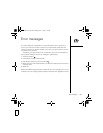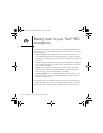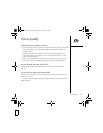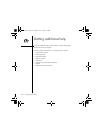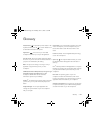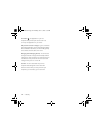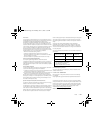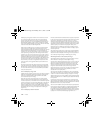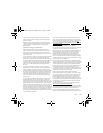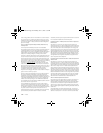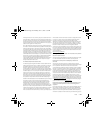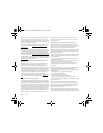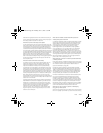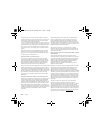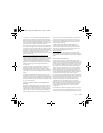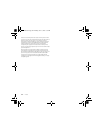
FCC :: 197
government agencies are continuing to monitor the latest scientific
findings to determine whether changes in safety limits are needed to
protect human health.
FDA, EPA and other US government agencies responsible for public
health and safety have worked together and in connection with WHO to
monitor developments and identify research needs related to RF
biological effects.
What levels of RF energy are considered safe?
Various organizations and countries have developed standards for
exposure to radiofrequency energy. These standards recommend safe
levels of exposure for both the general public and for workers. In the
United States, the FCC has used safety guidelines for RF environmental
exposure since 1985.
The FCC guidelines for human exposure to RF electromagnetic fields are
derived from the recommendations of two expert organizations, the
National Council on Radiation Protection and Measurements (NCRP) and
the Institute of Electrical and Electronics Engineers (IEEE). In both cases,
the recommendations were developed by scientific and engineering
experts drawn from industry, government, and academia after extensive
reviews of the scientific literature related to the biological effects of
RF energy.
Many countries in Europe and elsewhere use exposure guidelines
developed by the International Commission on Non-Ionizing Radiation
Protection (ICNIRP). The ICNIRP safety limits are generally similar to
those of the NCRP and IEEE, with a few exceptions. For example, ICNIRP
recommends different exposure levels in the lower and upper frequency
ranges and for localized exposure from certain products such as hand-
held wireless telephones. Currently, the World Health Organization is
working to provide a framework for international harmonization of RF
safety standards.
The NCRP, IEEE, and ICNIRP all have identified a whole-body Specific
Absorption Rate (SAR) value of 4 watts per kilogram (4 W/kg) as a
threshold level of exposure at which harmful biological effects may occur.
Exposure guidelines in terms of field strength, power density and localized
SAR were then derived from this threshold value. In addition, the NCRP,
IEEE, and ICNIRP guidelines vary depending on the frequency of the RF
exposure. This is due to the finding that whole-body human absorption of
RF energy varies with the frequency of the RF signal. The most restrictive
limits on whole-body exposure are in the frequency range of 30-300 MHz
where the human body absorbs RF energy most efficiently. For products
that only expose part of the body, such as wireless phones, exposure limits
in terms of SAR only are specified.
The exposure limits used by the FCC are expressed in terms of SAR,
electric and magnetic field strength, and power density for transmitters
operating at frequencies from 300 kHz to 100 GHz. The specific values
can be found in two FCC bulletins, OET Bulletins 56 and 65: http://
www.fcc.gov/oet/info/documents/bulletins/#56; http://www.fcc.gov/oet/info/
documents/bulletins/#65.
Why has the FCC adopted guidelines for RF exposure?
The FCC authorizes and licenses products, transmitters, and facilities that
generate RF and microwave radiation. It has jurisdiction over all
transmitting services in the U.S. except those specifically operated by the
Federal Government. While the FCC does not have the expertise to
determine radiation exposure guidelines on its own, it does have the
expertise and authority to recognize and adopt technically sound
standards promulgated by other expert agencies and organizations, and
has done so. (Our joint efforts with the FDA in developing this website is
illustrative of the kind of inter-agency efforts and consultation we engage
in regarding this health and safety issue.)
Under the National Environmental Policy Act of 1969 (NEPA), the FCC
has certain responsibilities to consider whether its actions will significantly
affect the quality of the human environment. Therefore, FCC approval and
licensing of transmitters and facilities must be evaluated for significant
impact on the environment. Human exposure to RF radiation emitted by
FCC-regulated transmitters is one of several factors that must be
considered in such environmental evaluations. In 1996, the FCC revised its
guidelines for RF exposure as a result of a multi-year proceeding and as
required by the Telecommunications Act of 1996.
Radio and television broadcast stations, satellite-earth stations,
experimental radio stations and certain wireless communication facilities
are required to undergo routine evaluation for RF compliance when they
submit an application to the FCC for construction or modification of a
transmitting facility or renewal of a license. Failure to comply with the
FCC's RF exposure guidelines could lead to the preparation of a formal
Environmental Assessment, possible Environmental Impact Statement and
eventual rejection of an application. Technical guidelines for evaluating
compliance with the FCC.
RF safety requirements can be found in the FCC's OET Bulletin 65.
http://www.fcc.gov/oet/info/documents/bulletins/#65
.
Low-powered, intermittent, or inaccessible RF transmitters and facilities
are normally excluded from the requirement for routine evaluation for RF
exposure. These exclusions are based on standard calculations and
measurement data indicating that a transmitting station or equipment
operating under the conditions prescribed is unlikely to cause exposures in
RushUG.book Page 197 Monday, June 13, 2005 1:33 PM



